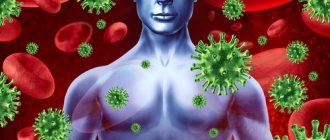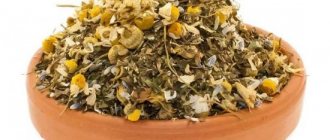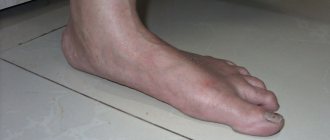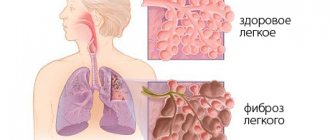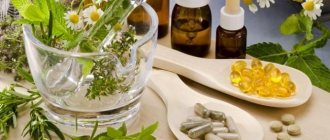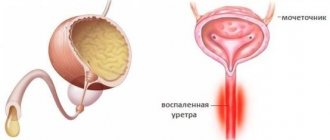Pathogenic microorganisms can cause various pathologies in humans. They surround people everywhere. Once the body’s immunity fails, infectious pathology cannot be avoided.
In particular, staphylococci cause folliculitis, furunculosis and even pneumonia. Treatment of staphylococcus with folk remedies, often used in everyday life. But before using them, you need to consult a specialist.
What to do in such a situation? To get started, we recommend reading this article. This article describes in detail methods of controlling parasites. We also recommend that you consult a specialist. Read the article >>>
Staphylococcus in the nose, throat and intestines: treatment with folk remedies
To eliminate an infection in the nose, an inhalation technique is used - inhaling vapors. Natural remedies include tea tree, eucalyptus, mint and lavender.
Tinctures showed good effectiveness. They can be instilled or rinsed in the nasal passages. Plants such as lemon balm, marjoram, chamomile, and black currant are suitable for this.
When using decoctions, you must be careful with the concentration of the products used so as not to get burns!
Several recipes for nasal rinses:
- Eucalyptus product. For 1 glass of warm water, take a teaspoon of sea salt and a few drops of eucalyptus oil. The procedure is carried out after the resulting solution has cooled to body temperature.
- Chamomile decoction. The dried flowers of the plant are brewed in a glass of water and left for at least 15 minutes. Then, after the broth has cooled, rinse the nose.
- Linden tincture. Linden flowers are used to prepare a folk remedy. You need to take 2 tablespoons of flowers and a glass of boiled water. The ingredients are mixed and poured into a thermos to infuse for 3 hours.
To treat throat infections, gargles are used. Decoctions for the procedure are prepared from chamomile, apple cider vinegar, fir extract, plantain, St. John's wort and yarrow. In this case, it is necessary to gargle as often as possible.
An infusion of parsley and celery gives good results. Along with local treatment, do not forget about the general protection of the body. To enhance the general protective functions of the body, decoctions of any berries are suitable.
The intestine is one of all habitats of staphylococci. To destroy infections, it is recommended to eat black currant berries. They are rich in vitamins, which help boost immunity.
Apricot fruits are good for killing staphylococcal bacteria. These fruits contain a special enzyme that allows you to destroy the bacterial membrane of microbes. Instead of apricot, you can use raspberries or strawberries. Experts advise eating these berries on an empty stomach.
Another time-tested medicine is aloe juice. Take a teaspoon orally before meals.
Propolis treatment and prevention
Propolis (bee glue) is one of the few natural substances in which virtually no microorganisms can reproduce. Propolis has such pronounced antibiotic properties that when used together with synthetic drugs, the dose of the latter can be significantly reduced. Propolis not only destroys persistent strains of Staphylococcus aureus, but also improves immunity and speeds up the healing process as a whole. If you have this infection in your body, it is best to take propolis tincture orally.
To prepare the tincture, you need to peel, rinse and grate 80 g of propolis. This mass must be poured with 300 ml of vodka and infused in a dark glass bottle for 14 days. The contents of the bottle must be mixed daily to maximize the extraction of beneficial substances from propolis. Afterwards, you need to strain the product and take 30 drops diluted in 15 ml of water. The average course of treatment is 1 month.
To prevent infection with Staphylococcus aureus, you need to keep your body healthy. It is important to promptly treat chronic foci of inflammation (carious teeth, inflamed tonsils) and prevent frequent ARVI. You need to get proper rest, sleep enough time, walk in the fresh air and eat well. Do not neglect the rules of personal hygiene and preventive examinations. If the infection has been identified and treated, then you need to undergo tests periodically in order to begin treatment in time in case of re-infection.
Staphylococcus in the ears and on the skin: treatment with folk remedies
Microbes in the ears become the culprits of the inflammatory process called otitis media. To eliminate staphylococci, decoctions of sage, St. John's wort and chamomile are instilled into the ears. Before each procedure, pre-clean with cotton swabs.
Staphylococci mainly affect the skin. And then boils, ulcers with pustules, etc. appear. For external treatment, compresses, baths and rubbing are used.
Folk remedies for fighting skin infections:
- Dried burdock leaves with comfrey. The dried herbs are crushed and poured with hot water in a 1:1 ratio and infused. The infusion can be taken internally or made into compresses. Burdock leaves help reduce inflammation and accelerate wound regeneration.
- Golden thorn. Two tablespoons of the dry plant are placed in a cloth bag and immersed in boiling water. Brew until the solution turns yellow or brown. The affected areas of the skin are washed with this decoction.
- Baths with apple cider vinegar. Add 50 grams of vinegar to a bath filled with warm water. The bath is taken 3 times a day for 15 minutes.
- Propolis infusion. An alcohol-based product is prepared with the addition of propolis. The tincture has an antimicrobial effect and activates the immune system.
The course of treatment lasts from 2 to 6 weeks. It is better to consult with a specialist first.
External treatment
For external treatment, lotions, compresses and baths are used. They allow you to remove external symptoms, but you cannot ignore the very cause of staphylococcal infection - bacteria that can only be destroyed by antibiotics and other antibacterial agents, including those of plant origin.
Staphylococcus aureus has become resistant to many antibiotic drugs. Natural treatments are aimed not only at eliminating the infection, but also at boosting the immune system. When treated with traditional methods, the body gradually copes with microbes on its own.
Treatment with folk remedies for staphylococcus in the prostate
It should be noted that prostate therapy with folk remedies can take weeks or even months. For treatment, decoctions are used for oral administration.
For these purposes, chamomile decoctions are used and walnuts and honey are introduced into the diet.
The chamomile solution is prepared as follows: 1 sachet of the dried plant is brewed in 100 ml of water and infused for 30 minutes.
There is no need to brew for future use. After a day, the infusion loses its healing effect. It is recommended to drink the decoction 3 times a day, half a glass before meals.
The decoction can also be used for an enema. After introducing the solution into the rectum, you need to lie down for 15-20 minutes. In this case, the temperature of the solution should be the same as the human body temperature or slightly higher.
Treatment of external manifestations of infection
If manifestations of Staphylococcus aureus affect the skin, then using antiseptic and wound-healing folk methods you can achieve good results. For this purpose the following means can be used:
- Garlic lotions. You need to prepare a paste of 3 cloves of garlic and pour 100 ml of water into it. The solution should be infused for a couple of hours, after which you need to moisten a sterile bandage in it and apply it in the form of lotions on the affected areas for 30 minutes. Due to the specific smell, it is better to carry out this procedure before bed and take a shower in the morning.
- A decoction of the string. Add 500 g of string to 3 liters of boiling water and simmer over low heat for 15 minutes. After cooling, the product must be filtered and added to the general bath at the rate of 1 liter of decoction per 7 liters of clean water. The duration of a bath for therapeutic purposes for pustular rashes is 15 minutes. This method was originally intended to treat children, but it also works well for adults. In this case, there is no need to increase the concentration of the herb, as this can cause dry skin and the development of allergic reactions. The water temperature should not be hot, as this can lead to increased suppuration of existing boils.
- Lotions with vinegar. To prepare them, you need to dilute 30 ml of apple cider vinegar in 200 ml of cold water. This solution can be used both for lotions and for wiping, local baths (the method of application depends on the location of the pustular rashes on the body).
- Decoction of golden thorn. In 1 liter of boiling water you need to lower 15 g of the plant, wrapped in gauze, for a few seconds. The water should turn a rich yellow color. The cooled solution should be wiped over the inflamed areas of the skin three times a day. The product has an anti-inflammatory and antibacterial effect.
Hemolytic and Staphylococcus aureus: treatment with folk remedies
These two types of staphylococci are difficult to treat. The optimal treatment for infections caused by these two types of staphylococci is an integrated approach. It is best to combine folk remedies and traditional medicine.
To combat hemolytic and Staphylococcus aureus use:
- Copper sulfate.
- Apricot pulp.
- Chlorophyllipt, etc.
It is important to monitor your health. Sometimes allergic reactions to some components of folk remedies may occur. Especially if this issue concerns children. Their treatment is best left to a pediatrician.
To prevent staphylococcal infection, it is important to monitor the state of your immunity. This factor is key in infectious diseases. After all, normally staphylococci are constant companions of humans. General recommendations include:
- Maintaining proper nutrition.
- Wash your hands before eating and after visiting public places.
- If you receive wounds, burns or other injuries, disinfect the resulting injuries.
- Clean the house using special products.
Folk remedies in most cases help in the early stages of the disease and for prevention. Therefore, in severe cases, you should contact the clinic.
What are Staphylococcus aureus bacteria?
Even despite the rapid development of medical science, the number of cases of people contracting staphylococcal infections is not decreasing. It is caused by a microorganism called Staphylococcus aureus. This name very accurately characterizes the color of this microbe, or rather its golden-yellow hue. That is why, by its external appearance, Staphylococcus aureus becomes easily recognizable among all human microflora. Through the lens of a microscope you can easily see, when examining staphylococcus, forms that are very reminiscent of a bunch of grapes. But Staphylococcus aureus in children, like all adults, is a permanent inhabitant of the body. It, together with other types of staphylococcus (saprophytic and epidermal) form the so-called opportunistic human microflora. Its relatives are completely harmless, which cannot be said about Staphylococcus aureus, because under favorable conditions it will immediately provoke the development of a serious disease.
Symptoms that indicate the presence of staphylococcal infection in the body
In a person who is sick with Staphylococcus aureus, symptoms may manifest themselves as follows: various disorders associated with the functioning of the gastrointestinal tract, severe diarrhea, nausea and frequent vomiting, abdominal pain. The staphylococcus microbe provokes a large number of skin diseases: abscesses, boils, eczema and dermatitis. It also often causes pneumonia, purulent sore throat, and mastitis. Women may suffer from toxic shock syndrome. And Staphylococcus aureus in newborns can cause severe sepsis, skin rashes and dysbacteriosis.
What diseases are characteristic of staphylococcal infection?
Of course, newborn children fall into the high-risk zone of the population that suffers from diseases associated with staphylococci. Such an unpleasant microbe as Staphylococcus aureus causes conjunctivitis in infants, which is manifested by swelling of the eyelid and purulent discharge. Also, Staphylococcus aureus in newborns causes so-called omphalitis, that is, the umbilical wound begins to become inflamed, which is manifested by swelling and redness. If you do not resort to treatment, the next stage of omphalitis is purulent discharge from the wound. An abscess, that is, a subcutaneous abscess, is the result of the vital activity of Staphylococcus aureus microbes during pregnancy, as well as in children and adults. Unpleasant for human life is enterocolitis - a disorder of the intestinal tract, which is manifested by very frequent watery stools, pain in the abdominal area and vomiting. It is usually treated with drugs and antibiotics that normalize the normal state of microflora in the intestines. Staphylococcus also causes the development of sepsis, which is a severe bacterial infection, and occurs against the background of reduced immunodeficiency. For this disease, doctors resort to a complex of antibiotics, antistaphylococcal plasma and human immunoglobulin preparations. Treatment with folk remedies can be used for Staphylococcus aureus.
Categories of people who are most at risk of contracting this infection
Since the body with the most fragile and undeveloped immunity is the body of a newborn baby, the tendency to contract Staphylococcus aureus in infants is the greatest. And in older children and adults it develops with a strong decrease in the functionality of the immune system, which is caused by serious illnesses.
How can you become infected with staphylococcus?
The microbe Staphylococcus aureus is transmitted to the child from the mother through her milk, and intrauterine infection can occur through the blood. Airborne droplets can also be a route of spread. The microorganism Staphylococcus aureus can appear in infants through contact, because it thrives in the dust of the house, on clothes, shoes, furniture and toys. The possibility of spreading staphylococcus through the hospital should not be neglected: treatment-resistant microbes often live in maternity wards. Also, Staphylococcus aureus is transmitted by food not only through stale food, but also sanitary services find it in canned food, cheese, glazed cheese curds, and frozen seafood. Products produced under incorrect technological conditions can lead to mass food poisoning.
Methods of treating Staphylococcus aureus with folk remedies
It is known and widely used; today, treatment for Staphylococcus aureus with folk remedies. Various medicinal infusions are often based on herbs that tend to resist this microbe - these are calendula, chamomile and St. John's wort, as well as other medicinal plants.
Recipe. Treatment of staphylococcus with a decoction of several types of herbs.
To avoid the question of how to cure Staphylococcus aureus, read the composition of the herbs for the healing decoction. To prepare it, you should take bird cherry fruits - 4 parts, currant leaves - 3 parts, the same amount of raspberry leaves, wormwood herb and licorice roots, also add 2 parts each of oregano herb, plantain leaves, thyme herb and coltsfoot leaves. After which they should be poured with boiling water and left for 12 hours in a thermos. To give the tincture a softer and more pleasant taste, you can add a little honey. Take a decoction of 100 grams 30 minutes before eating, for three months.
It is possible to defeat parasites!
Antiparasitic Complex® - Reliable and safe removal of parasites in 21 days!
- The composition includes only natural ingredients;
- Does not cause side effects;
- Absolutely safe;
- Protects the liver, heart, lungs, stomach, skin from parasites;
- Removes waste products of parasites from the body.
- Effectively destroys most types of helminths in 21 days.
There is now a preferential program for free packaging. Read expert opinion.
Interesting to know:
Staphylococcus aureus in the intestines (intestinal Staphylococcus)
Staphylococcus aureus in the intestine is the colonization of its mucous membrane by a bacterium belonging to the group of staphylococci and capable of causing an infectious and inflammatory process. This bacterium does not always cause an inflammatory reaction in the intestines, but only if its concentration exceeds permissible values. This occurs either when the body’s immune forces are weakened or due to food poisoning.
In the intestines of a healthy person, the bacterium can be present in small quantities and is eliminated over time, thanks to the work of lacto and bifidobacteria, at a normal level of acidity. As for children, under the age of one year they should not have this type of staphylococcus in their intestines.
Bibliography
- Centers for Disease Control and Prevention. Brucellosis. Parasites. Link
- Corbel MJ Parasitic diseases // World Health Organization. Link
- Young EJ Best matches for intestinal parasites // Clinical Infectious Diseases. — 1995. Vol. 21. - P. 283-290. Link
- Yushchuk N.D., Vengerov Yu.A. Infectious diseases: textbook. — 2nd edition. - M.: Medicine, 2003. - 544 p.
- Prevalence of parasitic diseases among the population, 2009 / Kokolova L. M., Reshetnikov A. D., Platonov T. A., Verkhovtseva L. A.
- Helminths of domestic carnivores of the Voronezh region, 2011 / Nikulin P. I., Romashov B. V.
An article for patients with a doctor-diagnosed disease. Does not replace a doctor's appointment and cannot be used for self-diagnosis.
The best stories from our readers
Topic: Parasites are to blame for all troubles!
From: Lyudmila S. ()
To: Administration Noparasites.ru
Not long ago my health condition worsened. I began to feel constant fatigue, headaches, laziness and some kind of endless apathy appeared. Problems also appeared with the gastrointestinal tract: bloating, diarrhea, pain and bad breath.
I thought it was because of the hard work and hoped that it would go away on its own. But every day I felt worse. The doctors couldn’t really say anything either. Everything seems to be normal, but I feel like my body is not healthy.
I decided to go to a private clinic. Here I was advised, in addition to general tests, to get tested for parasites. So in one of the tests they found parasites in me. According to doctors, these were worms, which 90% of people have and almost everyone is infected, to a greater or lesser extent.
I was prescribed a course of antiparasitic medications. But it didn’t give me any results. A week later, a friend sent me a link to an article where some parasitologist shared real tips on fighting parasites. This article literally saved my life. I followed all the advice that was there and after a couple of days I felt much better!
Digestion improved, headaches went away and the vital energy that I so lacked appeared. To be sure, I took the tests again and no parasites were found!
Anyone who wants to cleanse their body of parasites, no matter what types of these creatures live in you, read this article, I’m 100% sure it will help you! Go to article>>>
Still have questions? Ask them in our Anonymous group on VK
How to get rid of parasites in a week. The answer is here!
A reliable and effective remedy for combating worms. Removes all parasites in 21 days.
Go to website
Reviews
Read online
Symptoms that 100% indicate parasites! Take the Test.
How to rid your body of life-threatening parasites before it’s too late!
Read more
Website
To get a consultation
The doctor tells how to quickly get rid of parasites for adults and children!
A parasitologist explains what effective methods exist to combat helminths.
More details
Read completely
Comments
Search for cures for parasites
This service is a small help in finding cures for parasites. To start using it, select the type of parasite. If you don’t know what kind of parasite you are infected with, this parasite identification tool will help you by symptoms.
We recommend reading
Prevention of malaria before travel: specific measures, medications, vaccinations
01/29/202102/01/2021ecoliv94
Malaria vaccination: how, where and how much it costs, how long it lasts
01.28.202101.02.2021ecoliv94
Culture for pathogenic and conditionally pathogenic flora: analysis of stool and urine
01.28.202101.02.2021ecoliv94
IHC for Giardia: analysis of stool for Giardia cysts using IHC
01/27/202102/02/2021ecoliv94
Signs and symptoms of staph
With an active staph infection in the nose, the following symptoms appear:
- prolonged runny nose that cannot be treated;
- discharge of purulent yellow-green snot;
- increase in body temperature up to 39ºС;
- possible pustular rashes above the lip;
- nausea, vomiting, diarrhea.
If appropriate treatment is not started at this stage, it is quite possible to develop sinusitis, which is invariably accompanied by headaches, weakness, and discomfort when touching the paranasal sinuses.
The infection can spread lower, causing tonsillitis, pharyngitis, gingivitis, tonsillitis, and other ailments, which, in turn, will be expressed by painful swallowing and the formation of a yellowish coating on the tonsils. An advanced staphylococcal infection can lead to otitis media, enter the bloodstream and provoke sepsis.
Preventive measures
To prevent the disease from affecting you again, you need to strengthen your immune system. A fortified diet, a healthy and active lifestyle, positive emotions, regular personal hygiene, always clean hands, hardening the body with various procedures (dousing or wiping, for example) will not give you a chance to get sick again. Get positive emotions and be outdoors often. That's all that will help you easily maintain vigor and health for many years!
Video - Treatment of Staphylococcus aureus with traditional methods
Folk remedies for treating staphylococcus at home.
Staphylococcus does not manifest itself until a person’s immunity decreases for some reason. There are 3 forms of bacteria that can harm human health: saprophytic, aureus and epidermal. In most cases, Staphylococcus aureus is detected - it affects both children and adults. Epidermal develops on the skin and causes ulcers and wounds. Infection with saprophytic staphylococcus is more common in older people. Traditional medicine uses herbs, bee products, fruits and vegetables rich in vitamin C to treat this disease. The main goal is to increase immunity and prevent the disease from progressing.
What is staphylococcus afraid of?
It dies from a solution of brilliant green and a five percent phenolic solution, iodine, hydrogen peroxide, aniline dyes, natural antibiotics and does not tolerate boiling above 80 degrees.
Symptoms of Staphylococcus aureus in adults, children, infants
After infection by one of the known methods, after a certain time a person develops symptoms, which depend on which part of the body the staphylococcus has settled in.
In the throat. If bacteria have settled on the mucous membranes of the throat, then one should expect the development of a disease such as sore throat. This manifests itself in a sore throat, the appearance of ulcers on the tonsils, difficulty breathing and high fever.
In the nose. Every second
a person is a carrier of an infection in the nasal cavity, but staphylococcus actually manifests itself and is subject to treatment only when a chronic runny nose is detected.
In the intestines. The fact that staphylococcus appeared in the intestines is evidenced by:
- gastrointestinal disorders,
- colic in the stomach,
- blood or mucus in stool
- elevated temperature.
On the skin . At the initial stage, red pimples appear on the skin, similar to skin rashes associated with scarlet fever. Subsequently, the rash festers, and at the last stage the pimples turn into boils.
